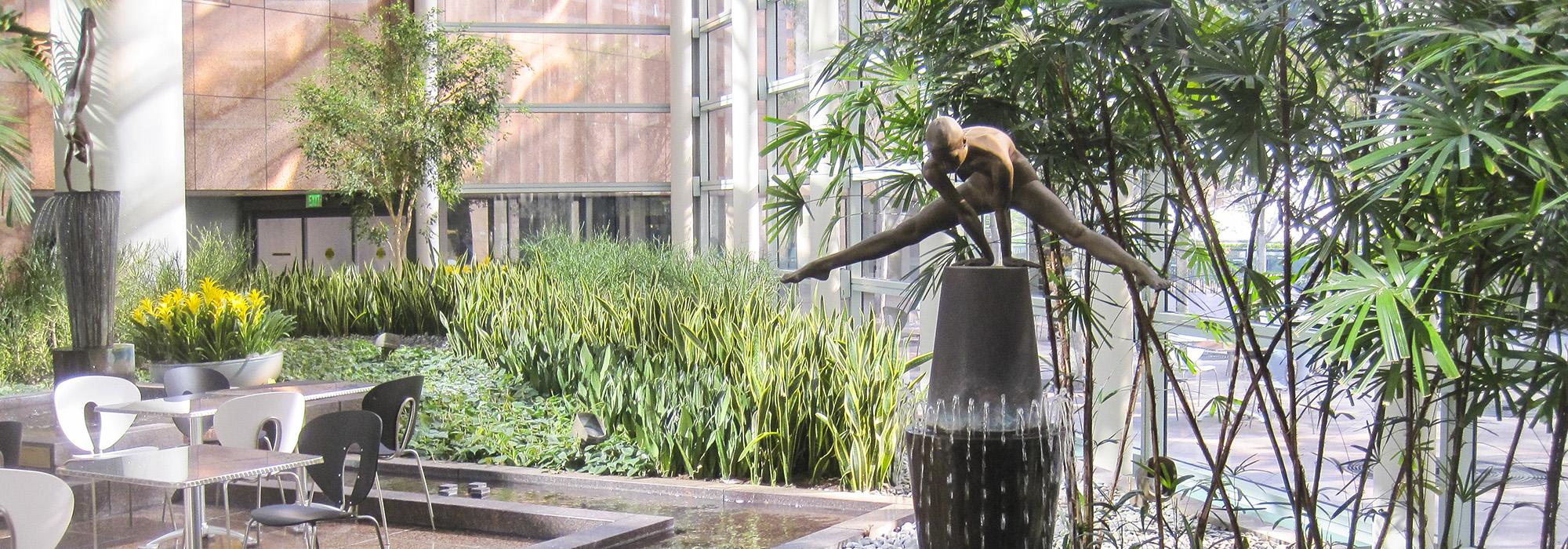Skip to main content
<style type="text/css"><![CDATA[body {font: 24px/1.5 arial, helvetica, sans-serif;}article {width: 500px;}.pquote {float: right;width: 350px;background-image: url("https://tclf.org/sites/default/files/thumbnails/image/PullQuote-Background-noquote.png"); background-size: cover; font-size: 24px; font-style: italic;font-weight: bold;padding: 10px 10px 10px 15px;margin: 0px 0px 10px 5px;}blockquote {margin: 0;}]]></style></head><drupal-media data-entity-type="media" data-entity-uuid="a59f0f9b-acc0-436e-a6eb-8d6c2b9140eb" data-align="left" data-view-mode="wysiwyg_native_size"></drupal-media><p>It's heartbreaking to see my father's legacy torn down and jeopardized. When I heard that Brookfield Properties had <a href="/halprin-wells-fargo-court-demolished?destination=search-results" target="_blank">dismantled the Wells Fargo Atrium</a> he designed (in collaboration with the Latin American sculptor Robert Graham) in Los Angeles, I was stunned and dismayed by the lack of regard for, and appreciation of, what had been an enduring artistic creation: a visual, curative, living, breathing garden by two internationally renowned artists. That space has now lost its cache and luminosity.</p><p>My father designed spaces to awaken mood and imagination, and he always preferred possibility and playfulness to limitation and barriers—between people, art, and nature. I have to wonder: Rather than tear down his landscapes and fountains, why not propose ways to breathe life back into them, if need be? <br/> </p><p>While in Los Angeles a few months ago, I went to see the <a href="/landscapes/bunker-hill-steps?destination=search-results" target="_blank">Bunker Hill Steps</a>. The area was conceived as an invitation for people to gather and socialize, to eat lunch and be outdoors, but the steps were hauntingly devoid of life. Most disconcerting was the juxtaposition of abject homelessness and the negligence of basic human needs. The landscape had become an inhumane environment, the antithesis of my father’s vision. His landscapes were conceived to be lived experiences, enacted and vitalized with human happenings and life-affirming activities of all types and <em>for everyone</em>.</p><drupal-media data-entity-type="media" data-entity-uuid="e299714f-1aa3-40dc-9817-41fad6205dde" data-align="none" data-view-mode="wysiwyg"></drupal-media><p>I also recently became aware that one of his fountains, in San Francisco’s <a href="/halprins-united-nations-plaza-targeted-redesign?destination=search-results" target="_blank">United Nations Plaza</a>, is once again at risk, somehow viewed as a problematic civic feature that needs to be “revitalized” in the wake of changing demographics. But will redesigning what is already an inviting space really solve the underlying urban problems? The complex difficulties and reasons behind homelessness in San Francisco and Los Angeles are surely the result of socioeconomic failures and human negligence, and a fountain can hardly be considered culpable. </p><aside class="pquote"><p><span style="font-size:18px;">“Today, when so much seems to conspire to reduce life and feeling to the most deprived and demeaning bottom line, it is more important than ever that we receive that extra dimension of dignity or delight and the elevated sense of self that the art of building can provide through the nature of the places where we live and work...” </span><br/><span style="font-size:14px;">-Ada Louise Huxtable</span></p></aside><p>To the contrary, humans are universally and instinctively drawn to the magic of fountains…to quench thirst, and as an intuitive response to the metaphor of water as the source of life and mystery. What would we be without these domains of nature and reverie to inspire and imbue the “spirit of place” in our urban environments?</p><p>With the ample new “tech” wealth that we so often hear about, and the brilliant thinkers, environmentalists, and designers at the forefront of invention in California, perhaps it would be better to re-envision our principles to include solutions to homelessness and ecological issues. How about planting trees and renewing sources of water in the cities? It is an enormous challenge, yet wouldn’t it be a feasible way to offer jobs and <em>dignity </em>to those who are destitute, to allow them to participate in working with nature to transform the environments that we all share in San Francisco and other cities?</p><p>Best regards,</p><p><em>- Rana</em></p>

